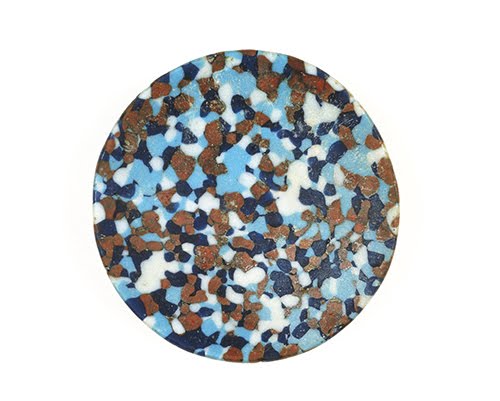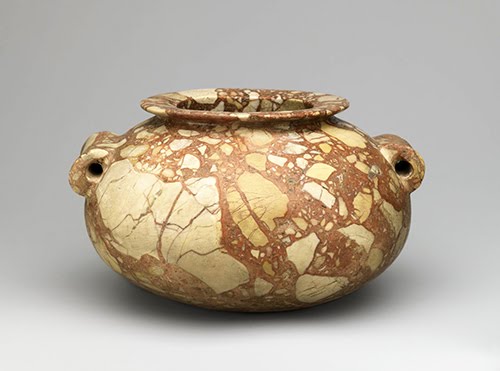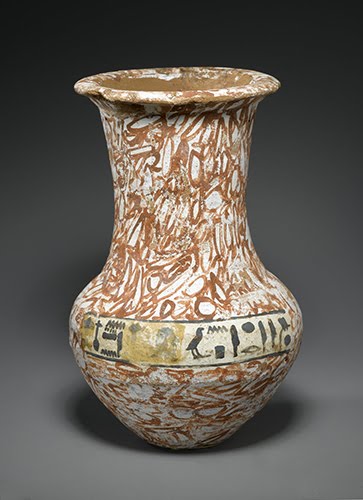Endlessly Engaging (Ancient) Egypt
Naturally occurring pattern always fascinates me, especially when there’s a good art history story behind it. I present you with three ancient Egyptian vessels, all with different, random patterns, and all in different materials. I’m totally in love this week with the first dish of mosaic glass.
 |
| Ancient Egypt, Dish, ca. 1390–1353 BCE. Mosaic glass, width: 4 1/8" (10.5 cm). © Brooklyn Museum. (BMA-5261) |
In Egypt, the first known glass as a component of faience ware, dates from as far back as the Neolithic Badarian culture at the turn of the 4000s and 3000s BCE. The first true glass ware, dating to the 1400s BCE, were actually this type of mosaic glass. Mosaic glass ware is made by fusing pieces of different colored glass. Egyptian vessels were produced by placing pieces of glass of various colors softened by heat—often the remains of broken vessels in the workshop—around a core of sand and cow dung. After glass blowing later became a common way to make glass during the first 100 years BCE along the Syro-Palestinian coast, mosaic glass was made by decorating the surface of hot, blown glass with chips of colored glass and then reheating it and reblowing it.
 |
| Ancient Egypt, Jar, ca. 3600-3100 BCE. Breccia, 5 1/2" x 7 5/16" (14 x 18.5 cm). © Brooklyn Museum (BMA-3470) |
This vessel dates from the Badarian period. What is to thought-provoking about it is the perfection of form, and the aesthetic considerations for how the random fragments of rock complement the shape. I will admit that I did not know what breccia was before cataloging this vessel. I filed it under “Sculpture” as the art form because it does not really meet the criteria of “Ceramics.” Breccia is rock composed of sharp angled fragments embedded in a fine-grained matrix of sand or soil that has formed over time from erosion, impact, or volcanic activity.
 |
| Ancient Egypt, Funerary vessel of the Priest Amon Neferher, from Thebes, ca. 1479–1279 BCE. Painted ceramic, height: 8 1/4" (21 cm). © Brooklyn Museum. (BMA-5234) |
“Keeping up with the Joneses” is obviously not an American invention from the 1950s. Appearances of status obviously mattered even in ancient Egypt. From the earliest period, Egyptians created funerary vessels from both ceramic and hard stones such as limestone, granite, alabaster, and marble. Stone vessels were obviously more durable and preferred by the Egyptians who were filling their tombs with offerings to last an eternity in the afterlife. Carved rather than thrown vessels were more expensive. Even though priests were held in high regard in Egyptian culture, they were obviously not wealthy like the members of the pharaoh’s court. Although this priest Neferher could not afford stone vessels for his burial, he wanted to give the illusion that he was well-off by having the vessels painted to resemble stone.
Correlations to Davis Programs: Explorations in Art Grade 3: 6.35, 3.Studio35-36; A Community Connection: 2.6, 5.2; A Personal Journey: 3.1, 3.4; A Global Pursuit: 1.4; Beginning Sculpture: 5; Experience Clay: 4, 5; Exploring Visual Design: 11; The Visual Experience: 10.2, 10.9, 10.6, 15.3; Discovering Art History: 2.2, 5.3

Comments